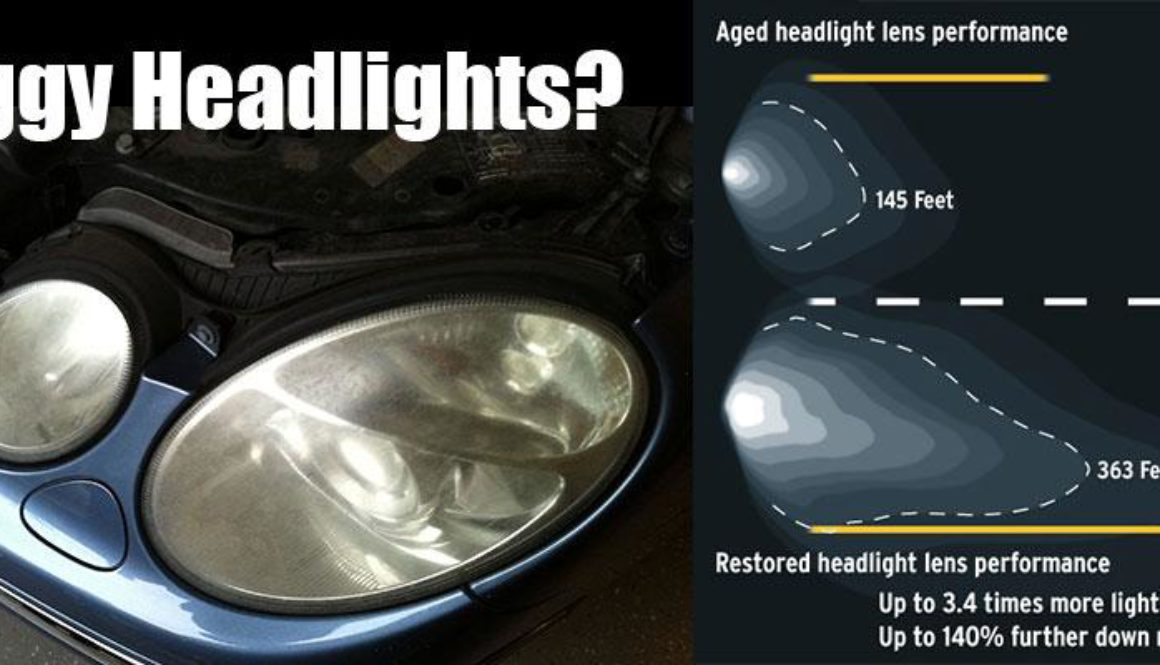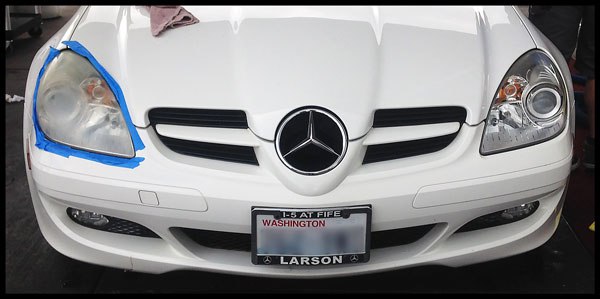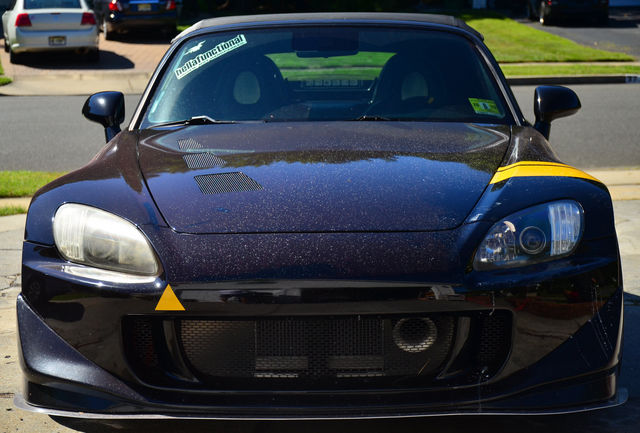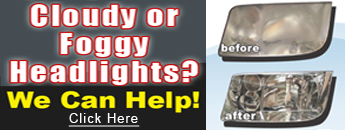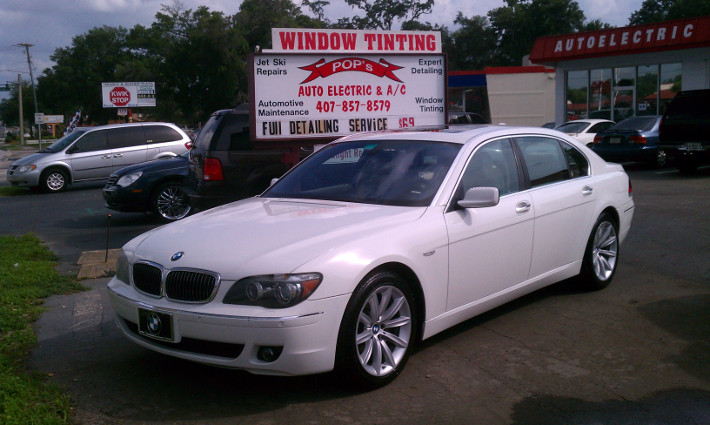Automotive Headlights; Are Yours a Danger to Others?
Automotive Headlights; Are Yours a Danger to Others?
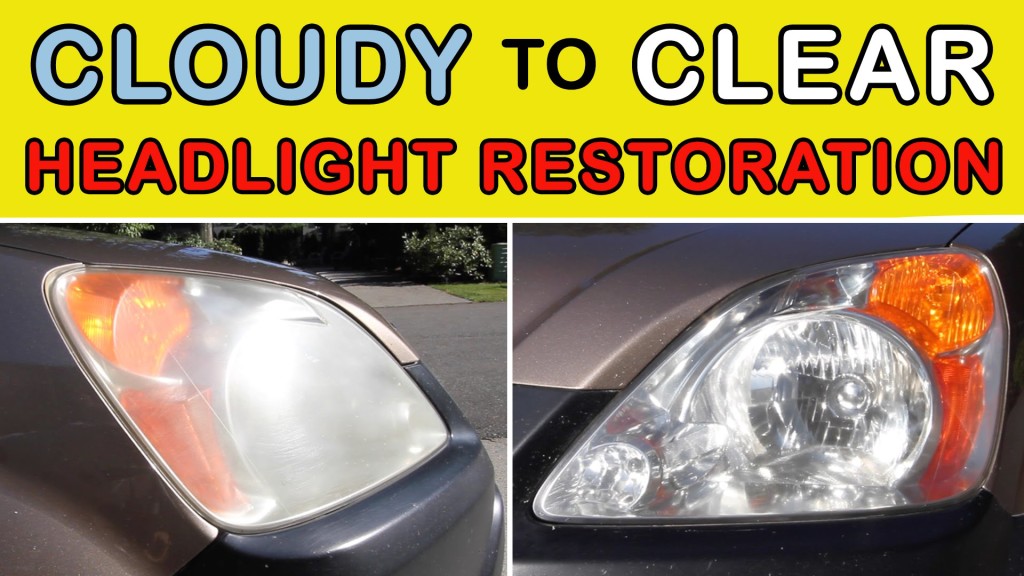

Is your car living up to the standards of the road? It is a fact of automobile ownership that certain parts of the car will be taken for granted. These are what can be considered the old reliable. They don’t make any strange noises and the car doesn’t start behaving oddly when problems arise. This does not mean that they are without difficulties which can affect the performance of the vehicle.
Automotive headlights operate ordinarily without much problem, in the past, automotive headlights were made of glass and they either worked or they did not work. Today however, automotive headlights can turn yellow and foggy without you noticing the change.
When automotive headlights turn yellow or become fogged, they are a danger to other cars, pedestrians as well as your family and yourself. In many states, severely yellowed or impaired headlights may main a ticket of up to 250.00 and or license suspension. Automotive headlights are serious business and involve real safety issues in the maintenance of your car.
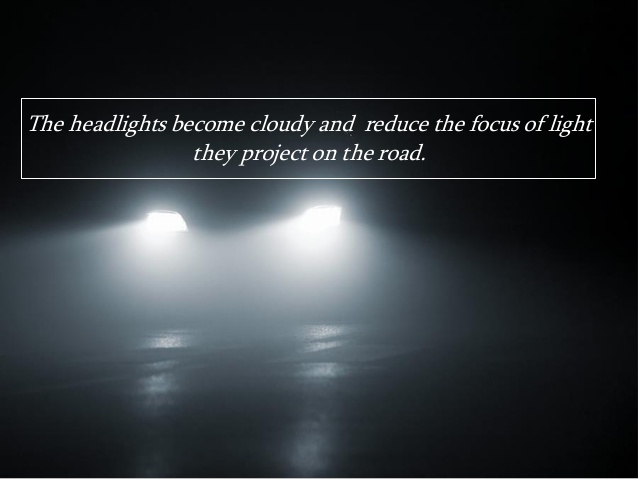
Why do automotive headlights turn yellow and foggy?
- 1) Oxidation: This happens due to the polycarbonate lens of modern automotive headlights are exposed to the air. Lenses develop microscopic cracks when exposed to UV radiation causing “cloudiness”.
- 2) Road Damage: While driving on damaged roads, the small rocks and debris pit the polycarbonate lens of modern automotive headlights. The gravel creates dents and pits on the lenses.
- 3) Dirt and Chemicals: If a car is on the road for a period of time, it develops a thin layer of dirt and chemicals over the lenses of automotive headlights. This layer is opaque (cloudy) and the affect is to dim the lights or make the automotive headlights hard to see on the road.
- 4) Water Vapor: Vapor is created inside the automotive headlight “box” due to high moisture content in the air which then gets trapped within the light box as the air outside the light box becomes drier. This water vapor scatters the light coming through the polycarbonate lens and creates patterns and diffusion of light on the road making it hard to see clearly.
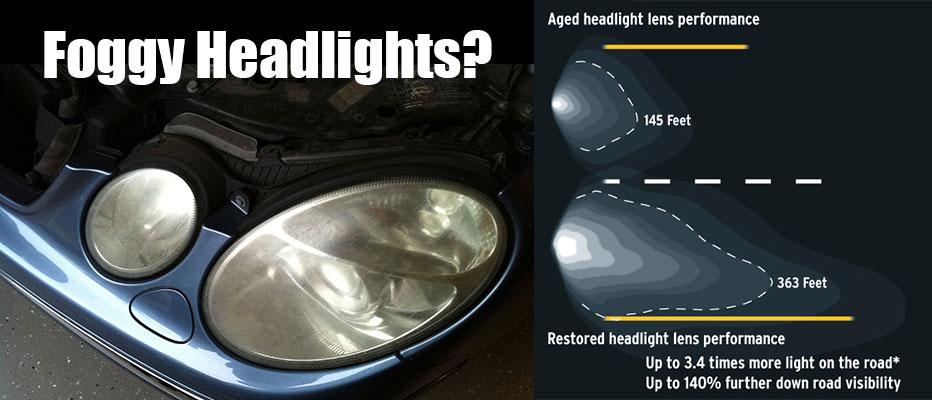
Here are some fixes to clean your automotive headlights if they are not too far gone:
- Remove the top layer of the automotive headlight lens and clean it with specially sand paper. (this seems easy with kits available in most auto supply stores, but be vary carful, if you do this procedure incorrectly, it can damage the headlights beyond repair)
- Polish the headlight lens using headlight polish with a microfiber towel. (this is often presented as a cure all easy fix, but results are varied and temporary)
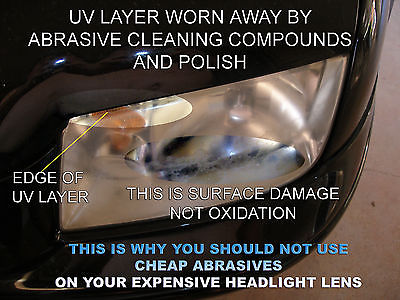
Time and the environment take their toll
The automotive headlights are external fixtures and this makes them susceptible to any environmental assault. The outside factors are more serious on cars today because the headlights are no longer made of glass. Instead, these fixtures are made of hard plastic that is covered with a clear coat to protect the porous surface.
The destructive elements can be road salt or pollution, but sooner or later the clear coat on the headings is going to start fading away. The summer time in particular can be rough because of the sunlight. Even if there is UV protection on the lenses of automotive headlights, it is good for only so long.
That clear coat finish installed over the lenses of new automotive headlight, also can be affected by the type of cleaning agents used. All of these factors result in the polycarbonate automotive headlight lens of modern cars eventually becoming oxidized and the lights take on a foggy appearance as a consequence. This adds up to a situation where automotive headlights can get worse for wear and need to have some maintenance done on them.
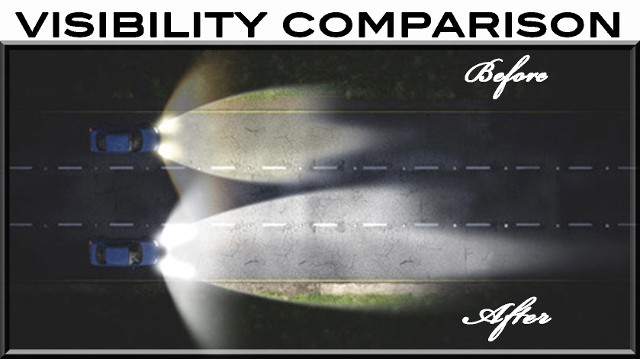
Why the concern?
You may think that this is not anything more than a cosmetic problem, and that conclusion would be more than simply wrong. People don’t seem to notice during the summer time because daylight hours are long, and the folks who live in dry climates may not immediately see a problem. When headlights become foggy yellow and oxidized it affects the light output.
The beam that should come from the automotive headlight is weakened and will not cover as much ground in front of the automobile. That gradually becomes an even more serious problem as the days grow shorter in wintertime. It also is true that in stormy or wintry weather, when vision is naturally reduced, the smaller lighted area is an invitation for accidents.
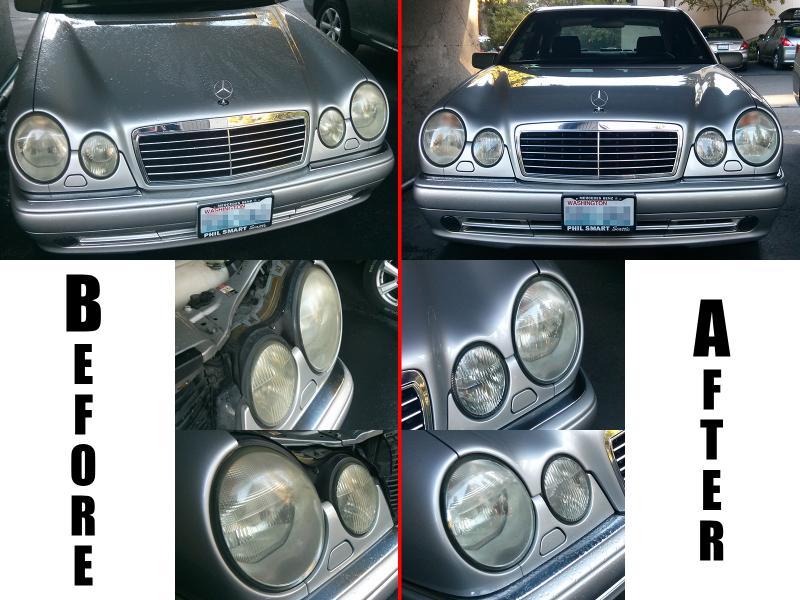
Preventive ways to avoid headlight problem
There are ways to prevent headlight problems, but you have to be cautious. Be careful about polishing the headlights because it can wear down that clear coat. There should be no grit at all in the polish and the soft polish medium can remove early signs of yellowing. If possible, the car should either be parked in a garage or having the headlights face away from the sun. This prevents the damage that can be caused by ultraviolet light.
If you wish to wash the headlights, it should be done with an automotive soap every quarter. This does have an advantage because the washing can prevent the buildup of acids and dirt that promote the yellowing. Should it appear that the yellowing is too advanced, the old clear coat is going to have to be removed with sandpaper or abrasive cleaner and a new coat of protective film applied.
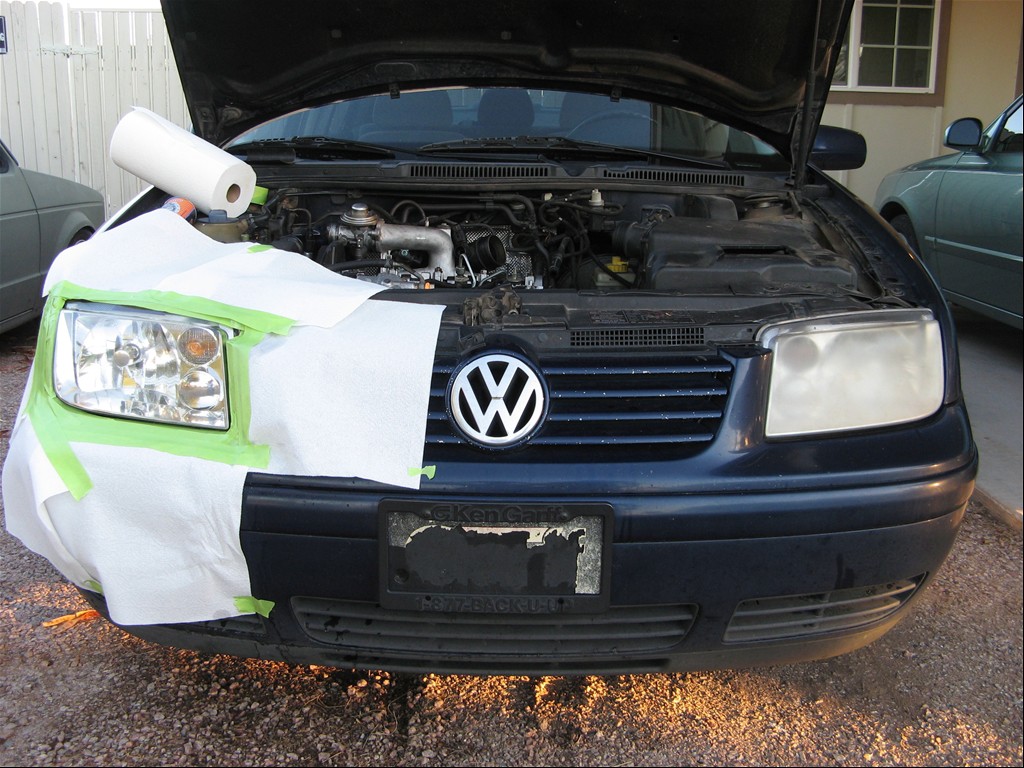
Prefer a professional to do the work
That standing work ought to be done by a professional. The work can be done by buying a kit from a retail store, but an amateur might make a mistake in sanding the very sensitive and soft polycarbonate surface of automotive headlights. That generates extra cost, which ought to be avoided. The professional can also recommend the right type of clear coat to produce the best results. That professional is Pop’s Auto Electric and AC in Central Florida.
The very top of the automotive headlights turning yellow is not as serious an emergency as worn brake pads or pistons starting to malfunction. In fact, you can drive for weeks without noticing there may be a problem. Taking care of the automotive headlights is not something that should not be put off indefinitely.
Anyone who is driving in a winter storm or a summer thunder storm late at night is aware of the dangers and safety hazard of dim automotive headlights, whether on your car or the one coming at you. This is a time of the year when automotive headlights can be inspected and fixed if necessary.
Any lingering problems can also be corrected without the great sense of urgency. Procrastination does have its price and you have to be aware of it. Making sure that there is no hazy obstruction to the light is simple precaution and safety. It can save you from a nasty accident some dark stormy night. It also it the single most item that makes you car appear old and less valuable.
Finally, when you look at a car in a parking lot, it is has yellow faded automotive headlights, does it look as valuable as the exact same car next to it with bright clear automotive headlights, think about it.

